The more we hit the road, the more we fall in love with it. There is excitement in the air when our motorcycle crosses the urban limits and cruises on the country roads. The skyscrapers and crawling traffic is replaced by verdant fields and wide open meadows on either side with only a few houses dotting the landscape as far as the eye could see. A road journey relieves the monotony and boredom of daily life for city dwellers like us. The quaint charm of the rural roads remains unrivalled by anything contrary.
A road trip to Junnar, in Pune district, is one such destination which provides respite from the fast-paced life. We did this trip in the first week of June just before the arrival of monsoon in the Deccan. The landscape was changing from dry to green. Grey clouds loomed above the mountain passes.
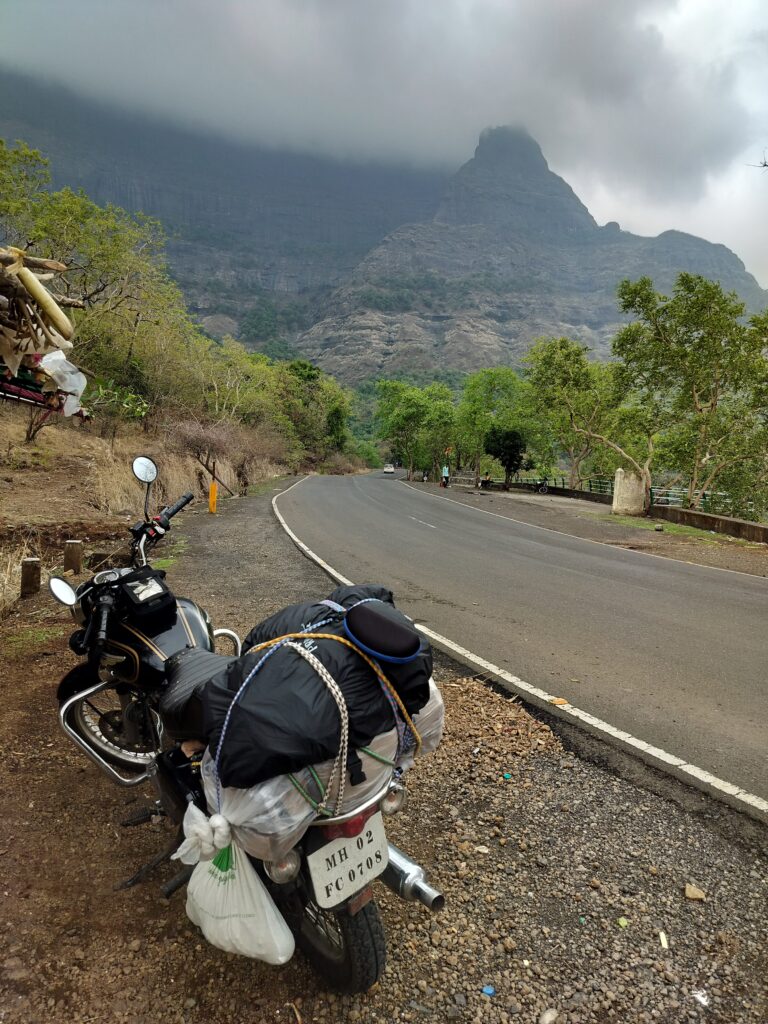
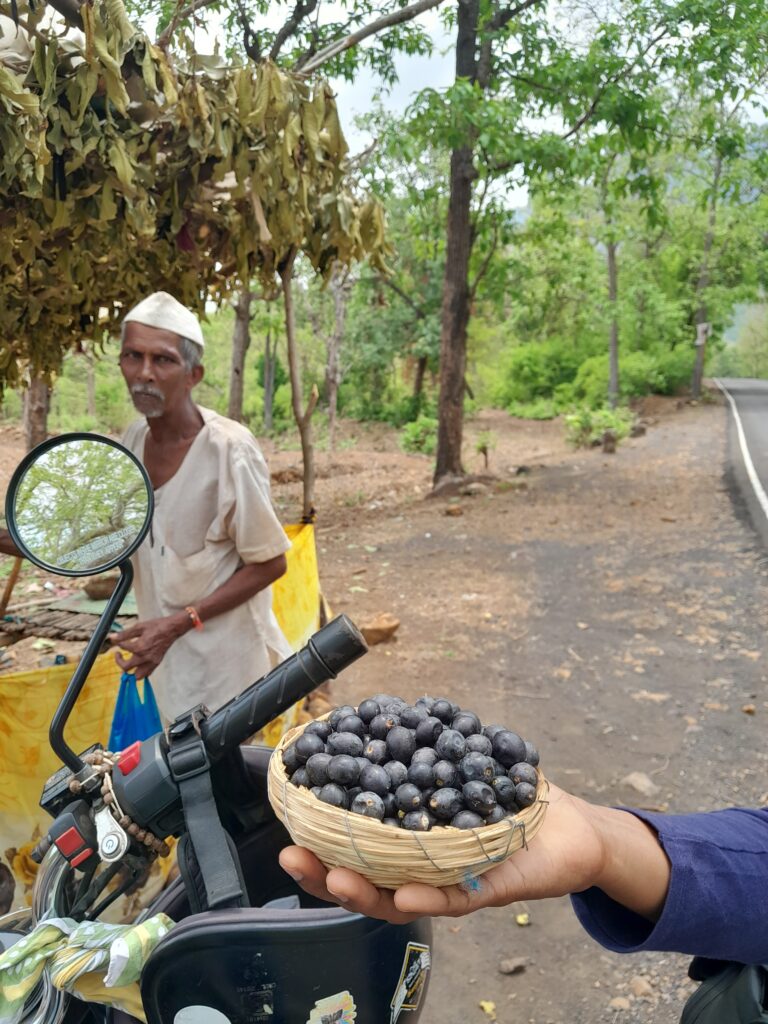
The real pleasure of the ride was after crossing Murbad – a busy town, around 30 kms from Kalyan. After this, the ride traversed through the countryside. The landscape was all composed of the view of trees lining the roads, mountain ranges of the Sahyadris, farmers ploughing their fields. We slowed down to feel the surroundings. There was a constant smile on my face, gazing at the beautiful farms, the mountains, the villagers, and kids who waved at us. Tribals from the surrounding villages had lined up their wooden stalls selling jamun, karvand (black currants) and mangoes. This was our last chance to eat these wild berries and we relished it to our contentment.
The route to Junnar takes you through lofty rugged hills of the Western Ghats. You will easily get mesmerised by the numerous ranges of hills. There are lots of places where you just want time to stop and enjoy the beauty of nature.
We had not made any itinerary for our 3 days of stay in Junnar. But with a few things in mind we started off. In this blog, we introduce you to
- a farmstay run by a doctor who is also very passionate about travel & history
- an offbeat ride to Naneghat,
- a historical Mughal palace,
- a less explored cave and
- 3 top popular attractions in Junnar.
OVERVIEW OF JUNNAR
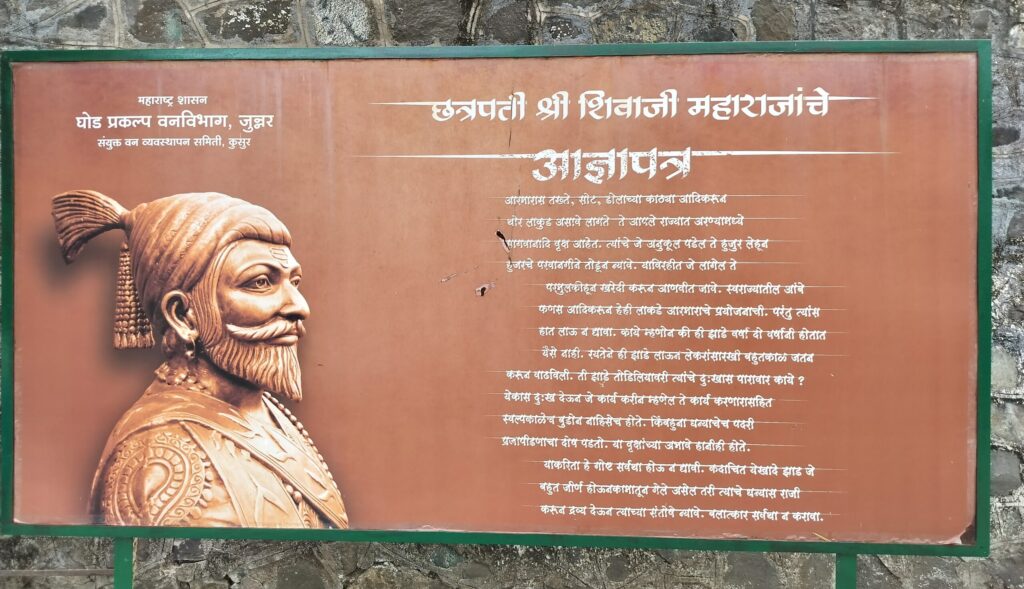
Junnar is a taluka in the Pune district and is famously known as ‘Shivjanmabhoomi’ – the birthplace of warrior king Chhatrapati Shivaji Maharaj. In the year 2018, Maharashtra government declared Junnar as the first tourism taluka and rightly so. It has a variety to offer to tourists with varied interests offering many things to do. Junnar has a tryst with history and is culturally rich in historical architectures like forts and caves, ancient temples with mythological significance, blessed abundantly with nature having diverse geographical features like mountain passes, lakes & dams.
The region around dams and plantations offers a scenic view and also gives opportunities to discover unique bird species. To experience fresh and clean air, Junnar is to be explored in the interiors where the tribals and villagers live in harmonious relationship with nature. They have a wide range of agriculture activities like sugarcane plantations, corn farms, onion storage structures, cultivation of flowers, etc. Rice, sugarcane, wheat, vegetables, maize, bajra, onion, groundnut are the major crops grown.
Whether you love adventure or history, are a devotee or a nature lover, there is something for everyone in Junnar. It was an important centre for Buddhism. The most interesting fact is that Junnar has the largest number of caves to be found in any one place in India. There are in all 324 rock-cut excavations on four distinct hills in various directions, but within a radius of 5 km from Junnar.
| Mountain Passes | Malshej Ghat, Nane Ghat, Darya Ghat |
| Lakes & Dams | Pimpalgaon Joga Dam, Chilewadi Pachaghar Dam, Yadgaon Dam, Manik Doh Dam, Vadaj Dam |
| Mountain Forts | Shivneri, Chawand, Nimgiri, Narayangad, Hadsar, Jivdhan, Shindola |
| Temples | Lenyadri & Ozar (Ashtavinayaka temples), Kukadeshwar, Khireshwar |
VEDKASTURI – TIME TO RELAX AND RECHARGE IN THE LÀP OF NATURE
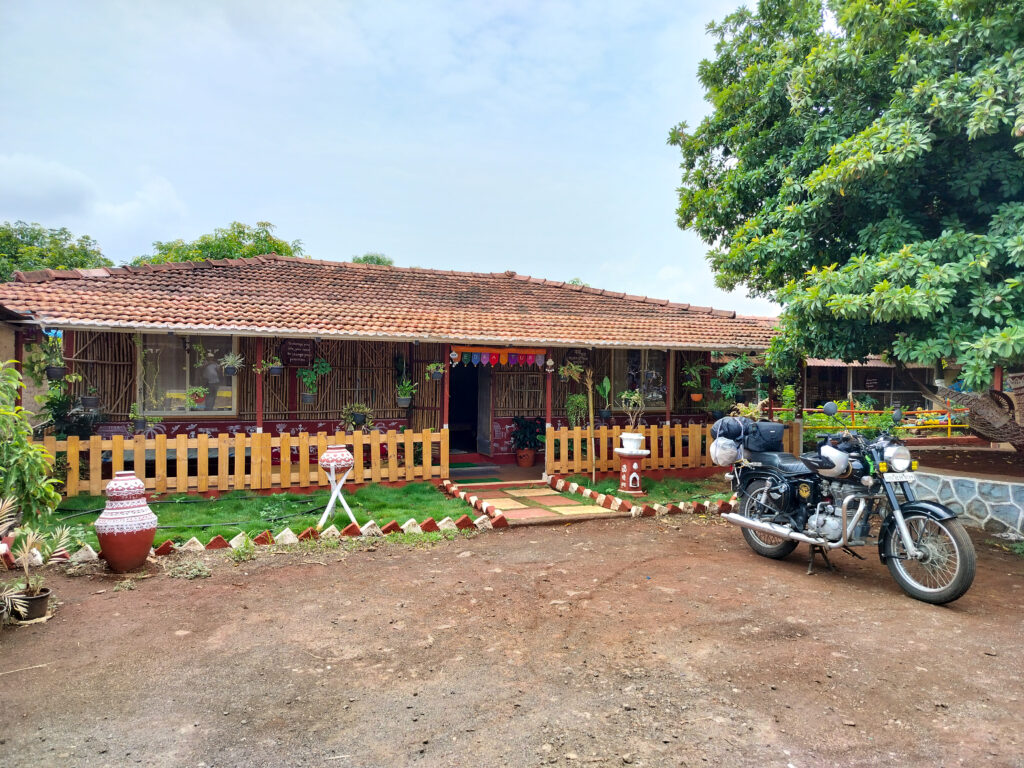
Looking for staycation vibes! Experience the idyllic countryside with Vedkasturi Agro. The air is perfumed with the earthy scent of the fields and chirping birds wake you up at dawn. The location of the farmhouse is amidst mango and chikoo orchards near Vadaj Dam in Parunde village surrounded by mountain ranges. Ideal place for a laid back experience.
Our stay in the bamboo house was a very amazing experience. It provided a rustic retreat and helped us reconnect with nature amidst the sustainable and eco friendly setting. Warli paintings adorned the lower portion of the house wall. Quotes written on wooden carvings hung on the bamboo abode gave positive vibes. They also have a good collection of Maharashtrian antiques. There is a study table with a small library of books near the window with a farmland view. There is ample space in the verandah where you can laze on the cot, or swing on the hammock. The bamboo house is an ideal place to spend some quality time.
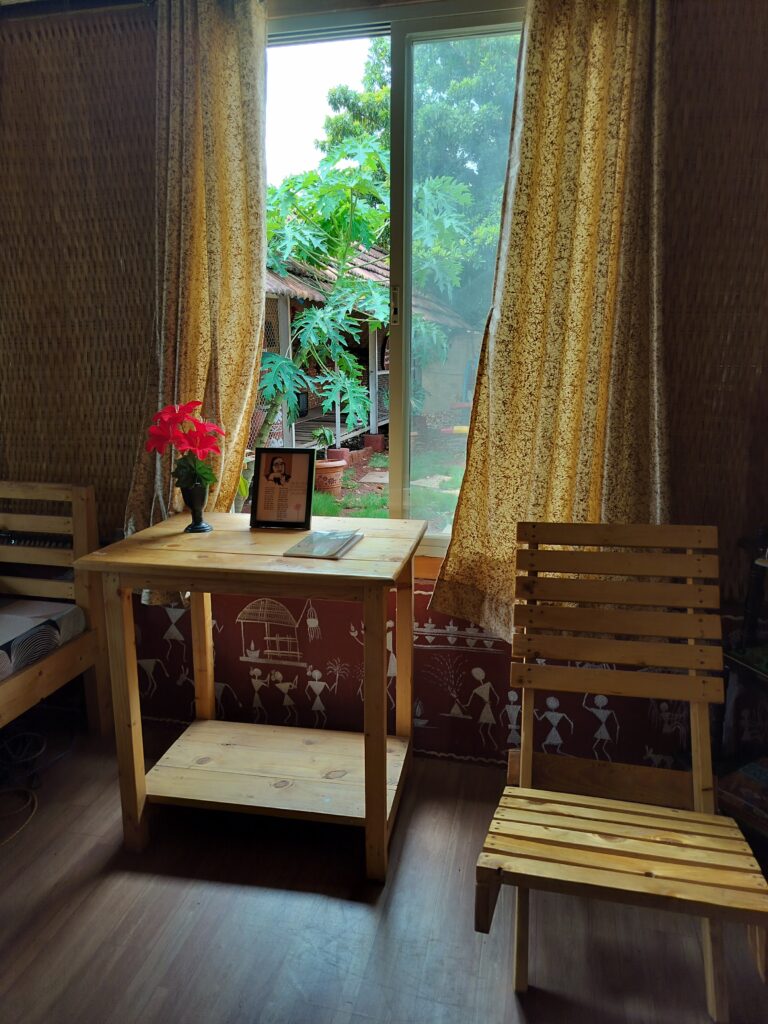

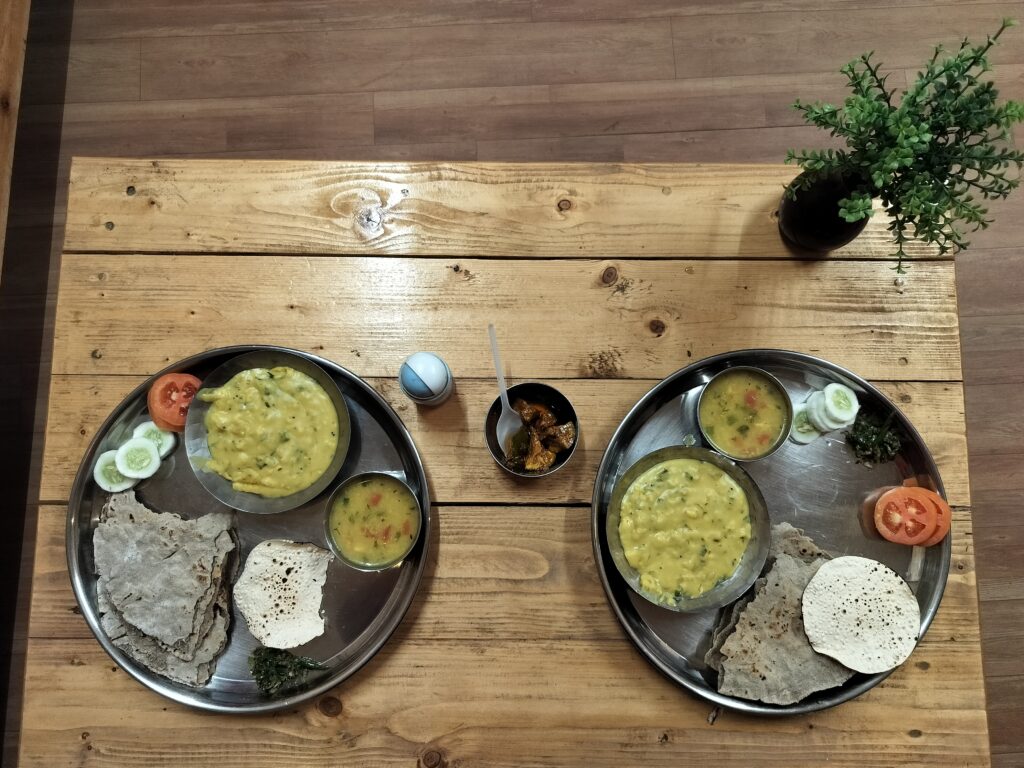
The property is managed by Dr. Amol Punde. He has a very good knowledge about Junnar. Can say he is a guidebook one can refer to. Passionate about history, he shares detailed information about any place in Junnar. We explored the Shivneri Fort with him under his guidance. They believe in the concept of experiential tourism. Vedkasturi is not just a homestay but experiencing the living. Introducing the rural way of living to the urban communities with meaningful conversations is what they strive for.
Things to see & do in & around Vedkasturi Agro Farm & Homestay :-
- Visit the well developed agricultural farm, chikoo & mango orchards.
- Go for an early sunrise walk to nearby farms & villages to witness the sustainable farming practised by the villagers.
- Do the thing you love to do – read a book, go bird watching, laze on the hammock, work in the fields, talk to the locals.
- Enjoy homemade Maharashtrian food sourced directly from the farm.
- Explore the beauty of the Vadaj Dam.
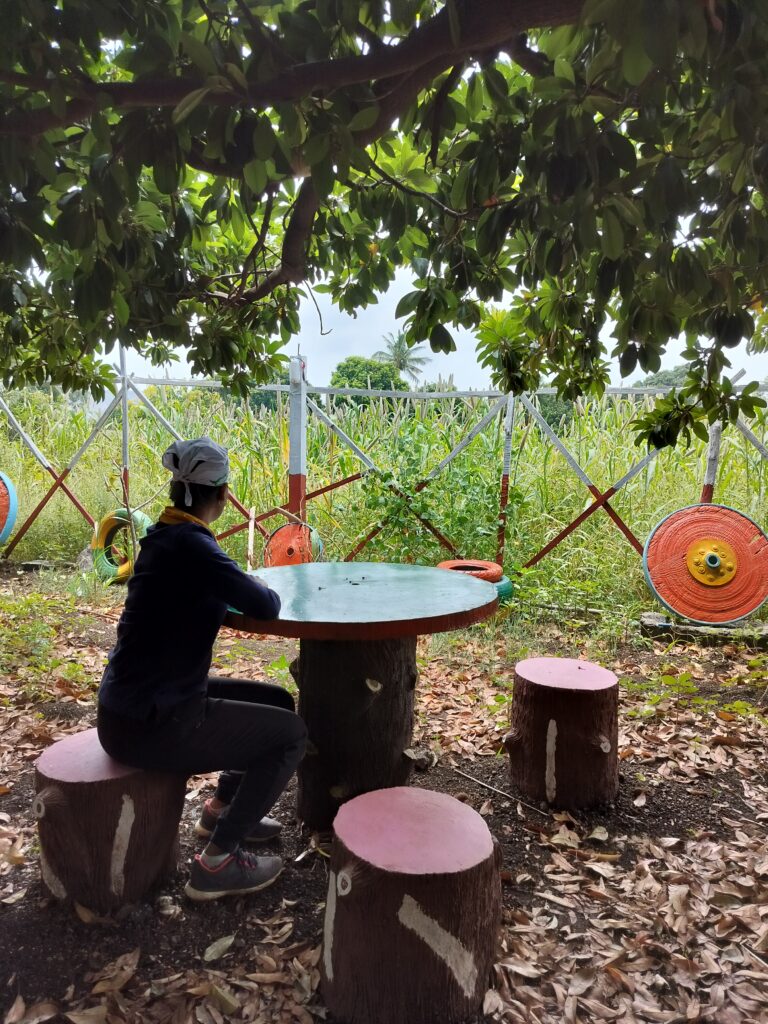
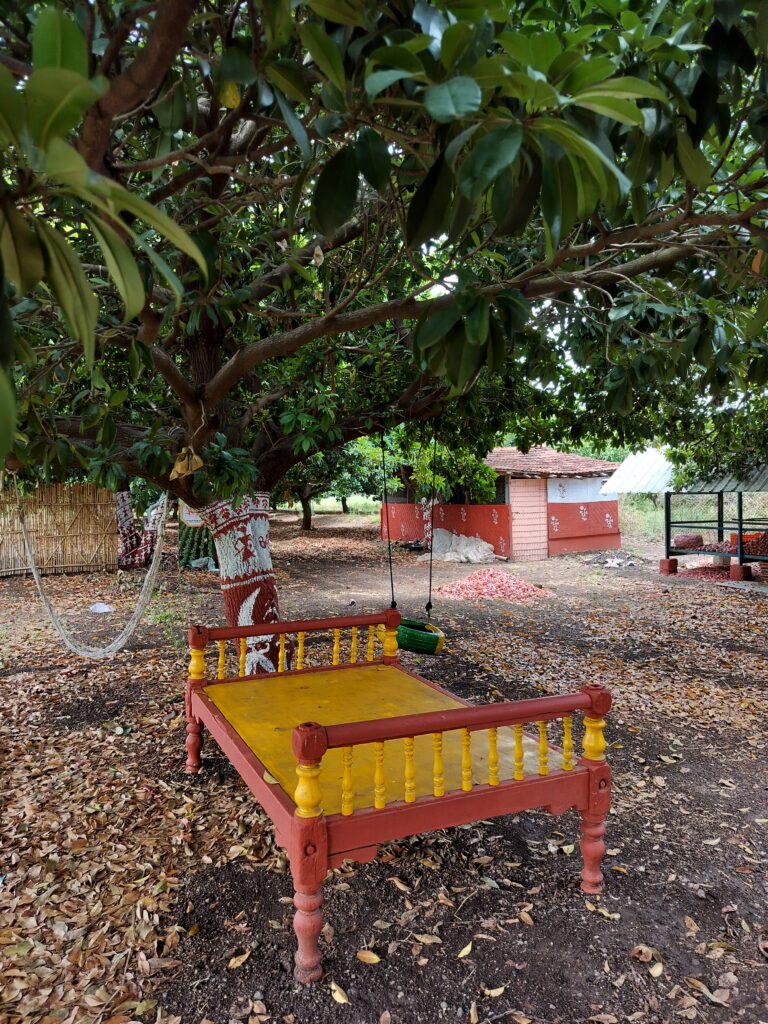
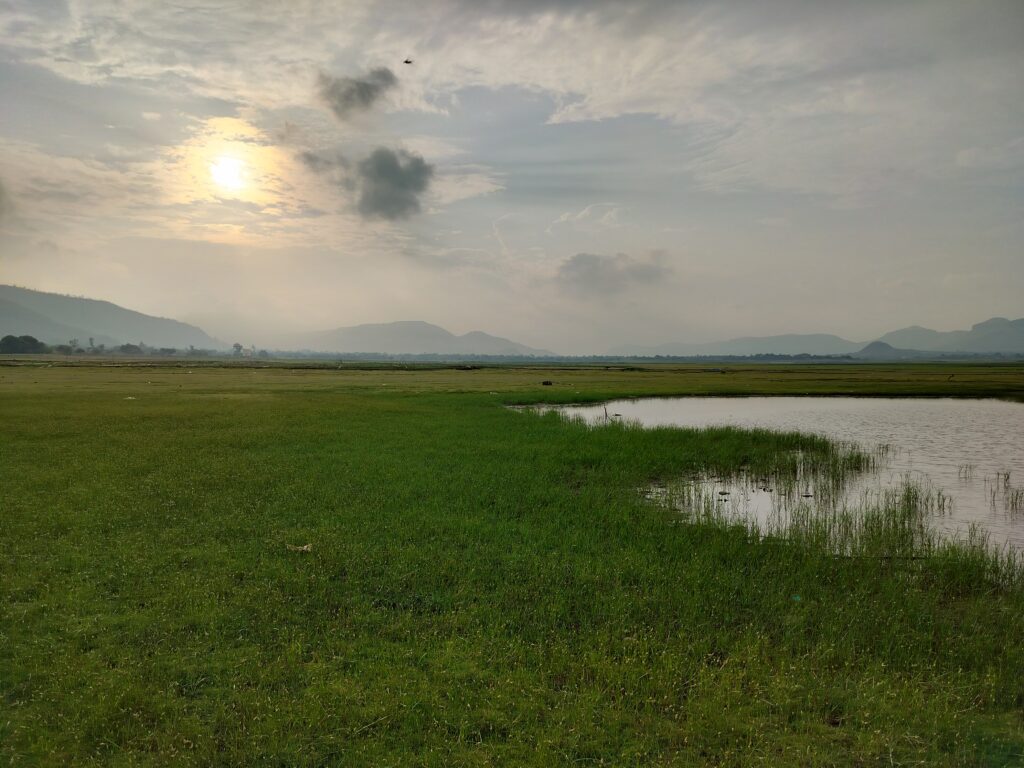
OFFBEAT RIDE TO NANEGHAT – THE ANCIENT TRADE ROUTE
Slice of History
In ancient times, Naneghat was a very important trade route connecting North Konkan (Sopara, now Nalasopara) to the Deccan plateau (Paithan). It was built during the Satavahana Dynasty around 2nd-century BCE. The movement of goods took place on this route made from stone steps. During the times of Shivaji Maharaj, this route was used between Kalyan and Junnar. At the entrance of Naneghat pass, on the right side, there is a large stone vessel known as ‘Ranjan’ which was used to collect coins from the traders coming from the Konkan coast. On the left side there is a small Ganpati shrine. As you start descending from the entrance, you come across some rock cut caves with inscriptions. There are stone seats carved along the walls. Probably because the cave was meant as a rest stop for travellers using this route.
In today’s time, this route is used by trekkers coming from Mumbai and by local villagers. Naneghat’s reverse waterfall point has become a popular attraction in monsoons.
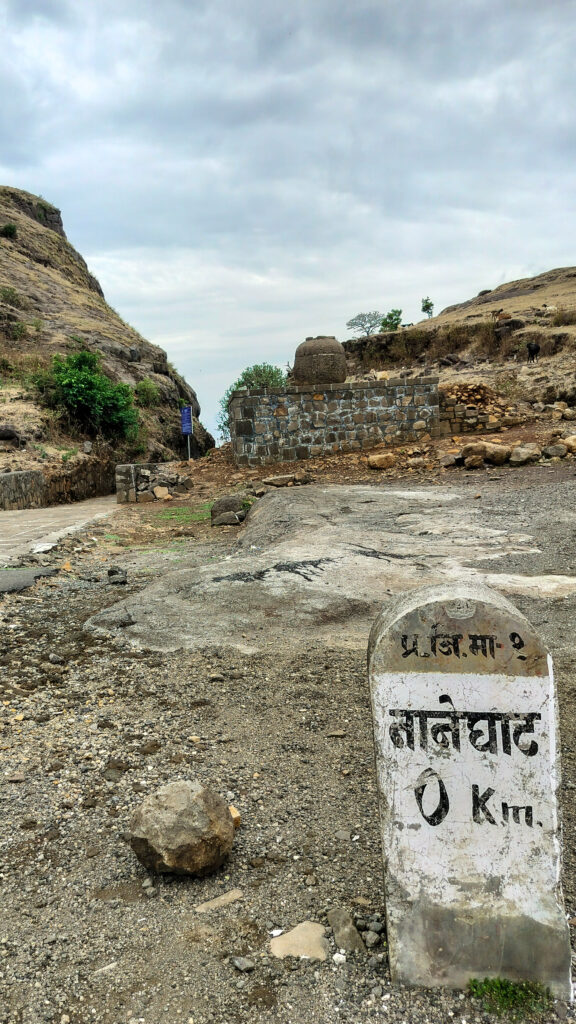
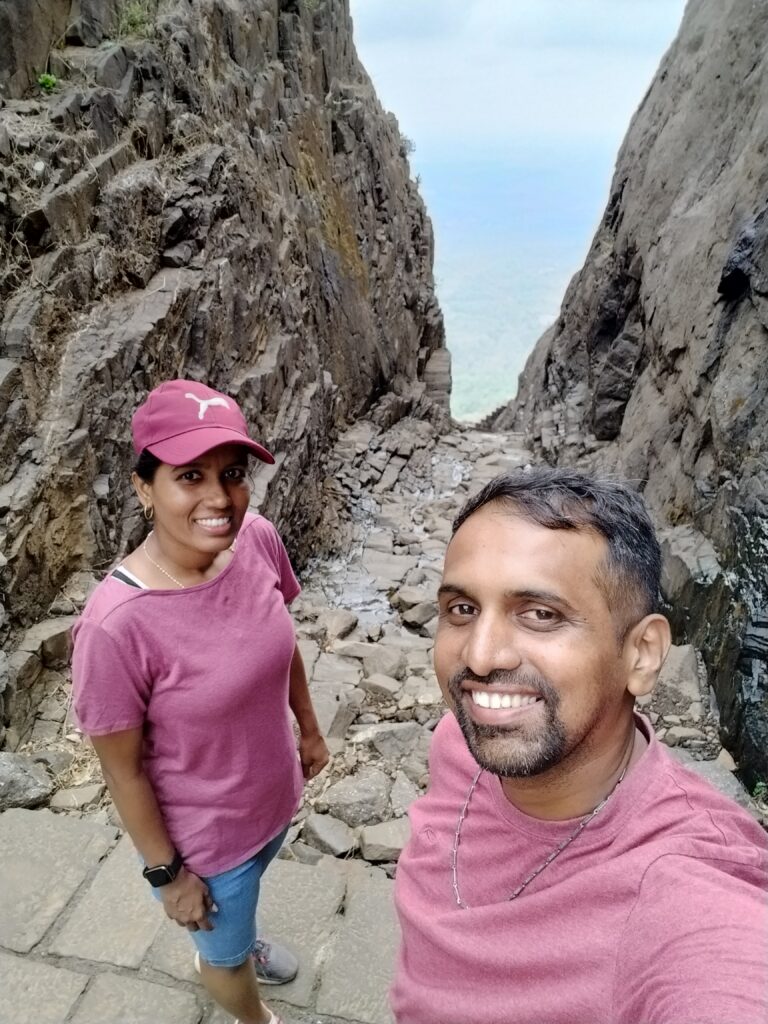
Experiences to Try
From the Ganpati shrine, a ten minute climb goes to the ‘Nanacha Angatha’ (Nana’a Thumb). The view from all sides of the peak is simply breathtaking. The towering peaks of the Sahyadris stand majestically. The first thing that catches attention is Jivdhan Fort. The way to the fort is near Naneghat on the other side of the mountain in Ghatghar village. It is advisable to hire a local guide for trekking to Jivdhan.
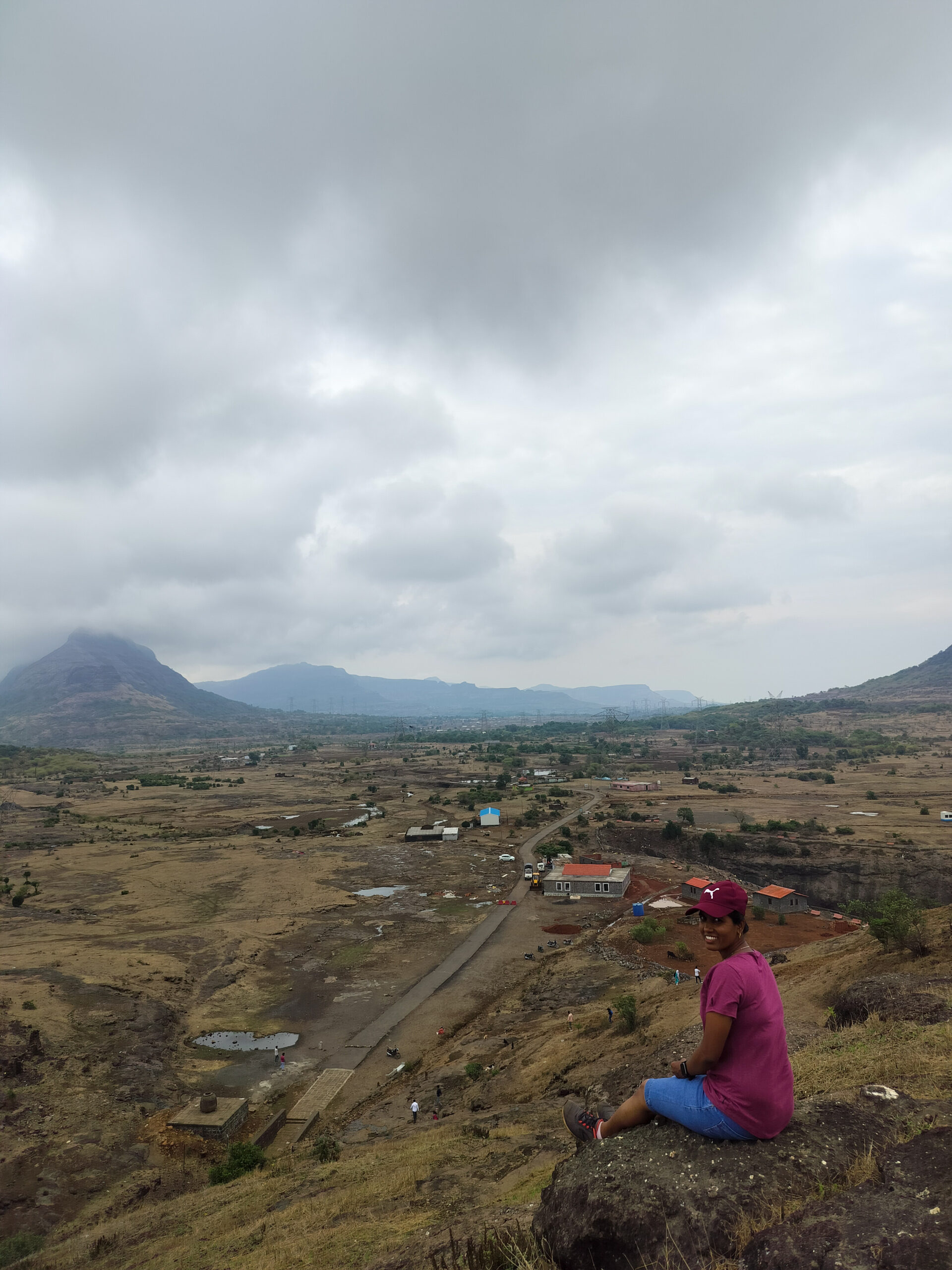
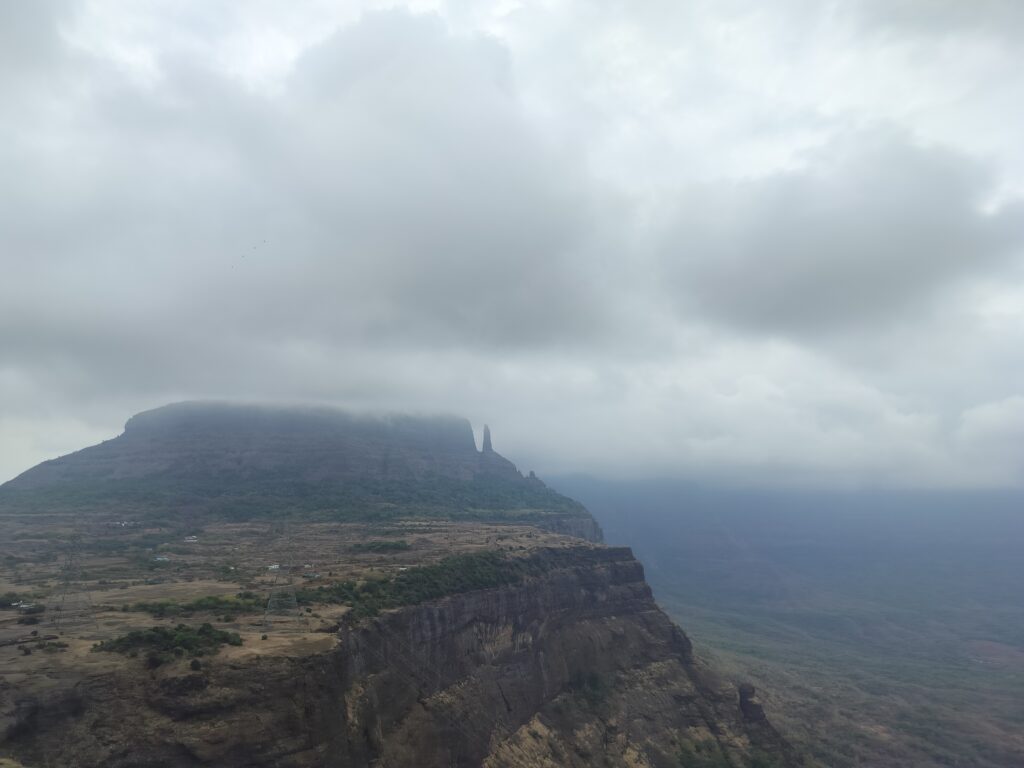
The ride to Naneghat from Junnar is very scenic. On the way you can visit the 12th century Shiva temple ‘Kukadeshwar’ located on the banks of the Kukdi river in Pur village. The river having its source near Naneghat flows through the village transforming the region into heavenly abode in monsoon. Watch out for those corn, sugarcane or rice fields. If you love to do birdwatching, you will surely find many birding activities.
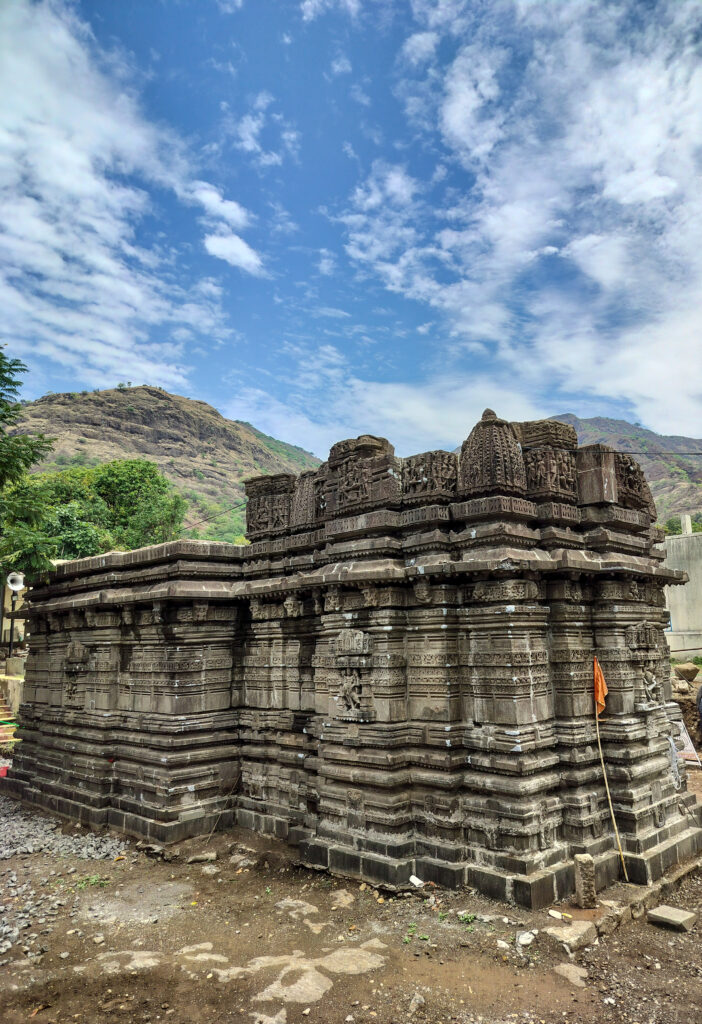
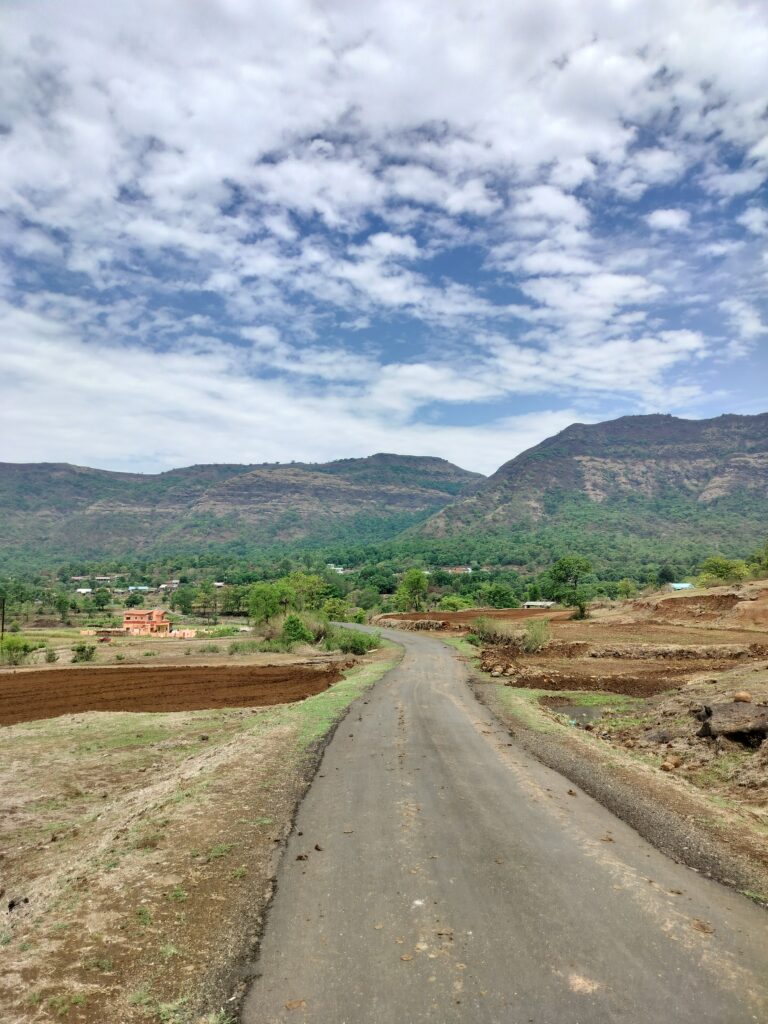
Enroute to Naneghat, you will see various plantation fields. You can stop and indulge in farming experiences with the locals who are very humble and happy to guide. It was so nice to see many farmers still using the traditional method of ploughing and sowing the seeds. We happily indulged in sowing rice at one place. Spending some time touching the soil felt good.
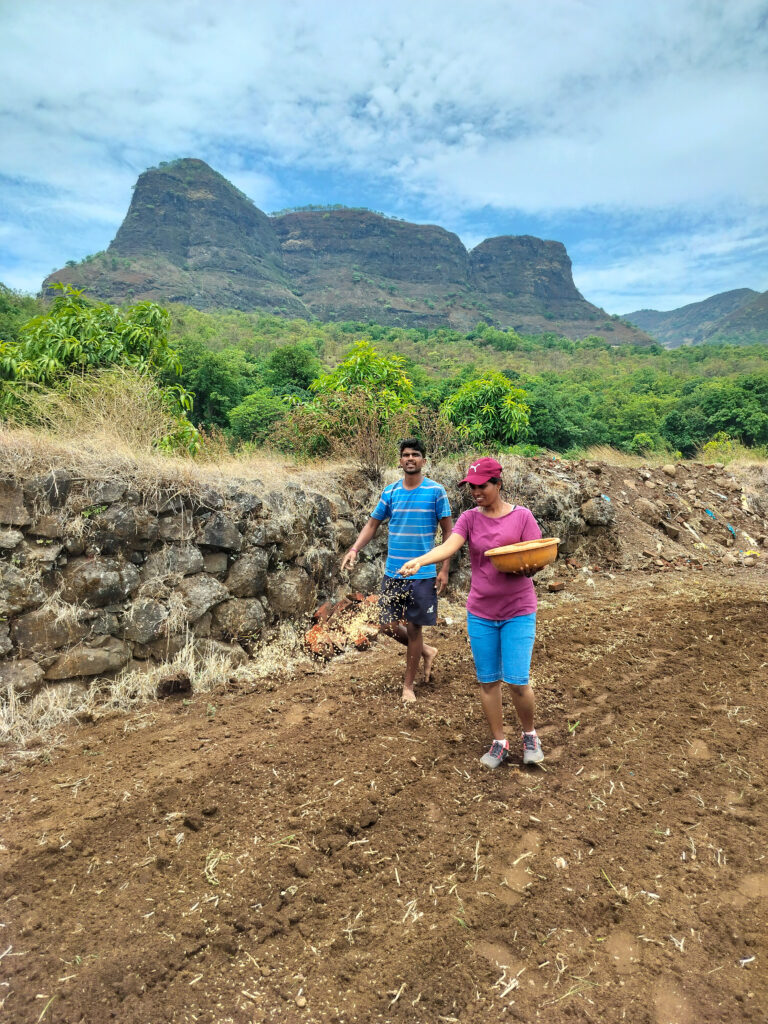
MUGHAL MARVEL OF JUNNAR – ‘THE HABASHI MAHAL’
History fanatics and aesthetes should not miss the 400 years old Mughal architecture ‘Habashi Mahal’ (aka Malik Ambar’s Palace). It is located in Hapusbaug surrounded by trees and fields on Junnar-Ozar road. Built in 1590 by Malik Ambar, the general of Nizamshahi dynasty, the palace is a reflection of Mughal craftsmanship. Historians believe that Shahjahan, Mumtaz Begum and Aurangzeb spent a few years of their residence in this palace. The carvings on the walls and pillars, jharokha style windows, and internal structure is very alluring. There is a small pond in the back where ducks roam freely. Various trees like tamarind, mango, jackfruit surround the palace.
For those seeking some quiet and peaceful time, this won’t disappoint. If you have an eye for photography, the palace is a good place to test your skills. The palace is under renovation but still worth a visit. Since it comes under a private property, a fee of Rs 40 per head is charged by the family for a visit.
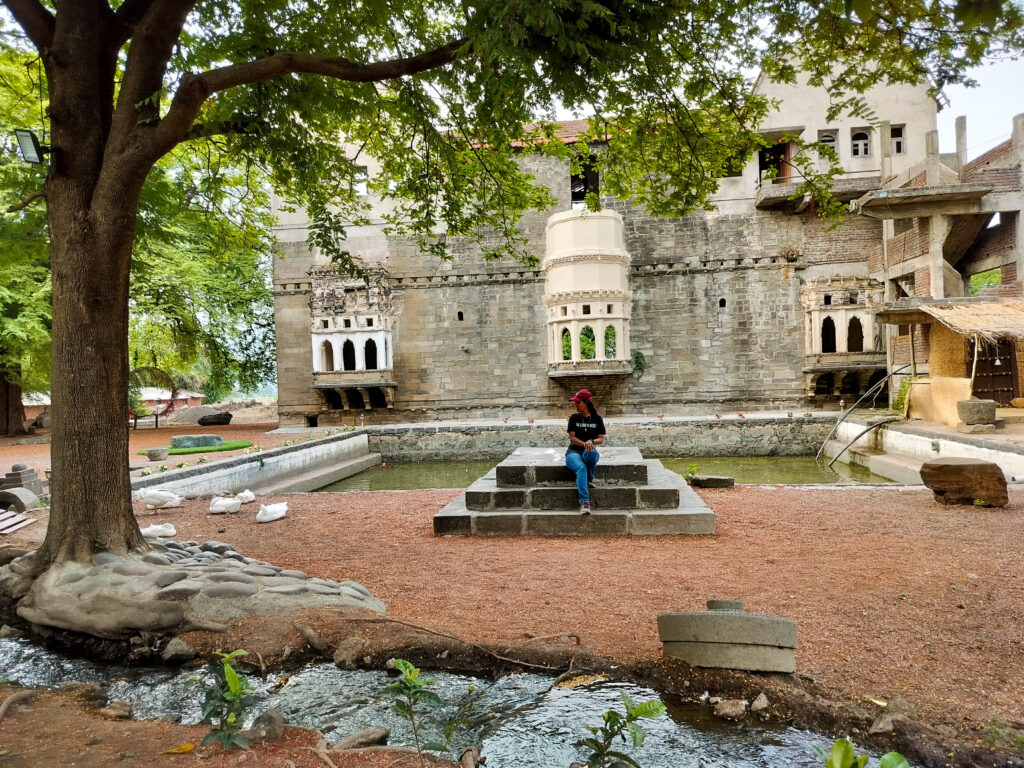
EXPLORE THE HIDDEN CAVE OF AMBA-AMBIKA
The caves in Junnar are an aesthetic example of Buddhist art having a rich history of over a thousand years. The caves are located on Manmodi hill to the southwest of the town. There is a small diversion on the Junnar-Vadaj road which goes towards the hills. You need to ask the locals about the starting point of the hike. Park your vehicle and go explore the three distinct groups of caves. There are 3 caves spread over the hill in different directions.
- Amba-Ambika Group of Caves
- Bhoot Leni Group of Caves
- Bhimashankar Group of Caves
When we reached the base after exploring Habashi Mahal, it was already evening. Time did not permit us to explore all the 3 caves. We were only able to see Amba-Ambika.
After walking on an established track through the forest, you will come across a signboard put up by the Archaeological Survey of India showing directions of the 3 caves. Follow the direction of the cave you wish to explore and keep walking on the trail. As you keep climbing, the trail diverges at many places without any direction sign. And that is the thrill of finding the caves by yourself. The caves are almost always located below the crest of the hill. Keep ascending on whichever path takes you upwards. It is not difficult; although you have to keep patience. This is an offbeat cave exploration and it is not a tourist destination. Very few reach here. Be prepared to walk alone in the forest. Once you reach the cave, you will be at complete peace. You can feel the vibe of the era gone by.
It has one Chaitya cave, a number of ruined cells and viharas, a stupa and water tanks. On the second level of the cave, you will find sculptures of Tirthankara & goddess Ambika, which is how this group of caves got its name. Ambika and Tirthankara are worshipped by the Jain community. Hence, it is believed that the sculptures were carved by the Jain from the original Buddhist caves.
From Amba-Ambika, the trail to the left goes towards Bhoot Leni caves and the right to Bhimashankar caves. We wished we had enough time to explore both. The location of the caves is very peaceful amidst the forest and one doesn’t feel like leaving anytime soon.
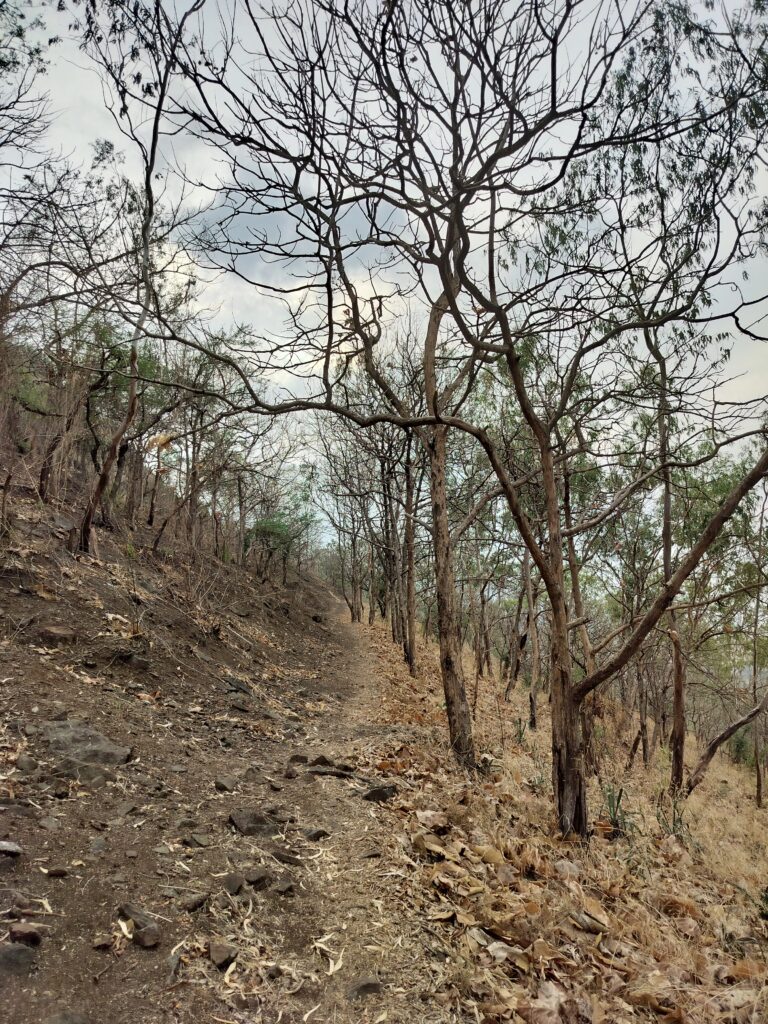
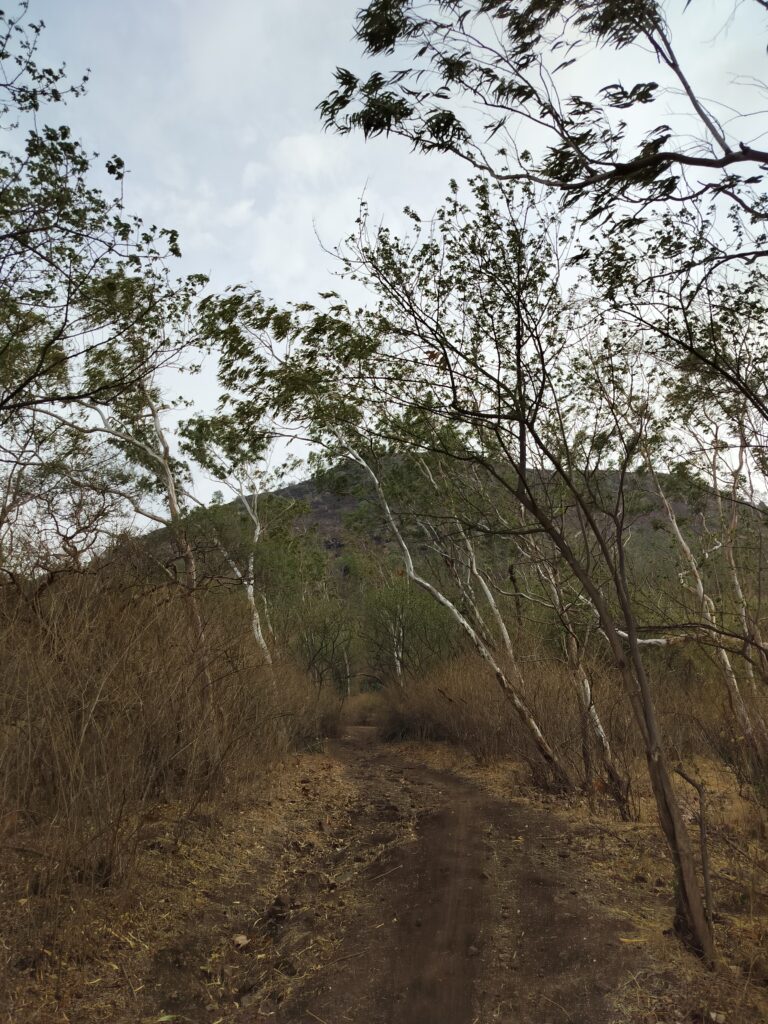
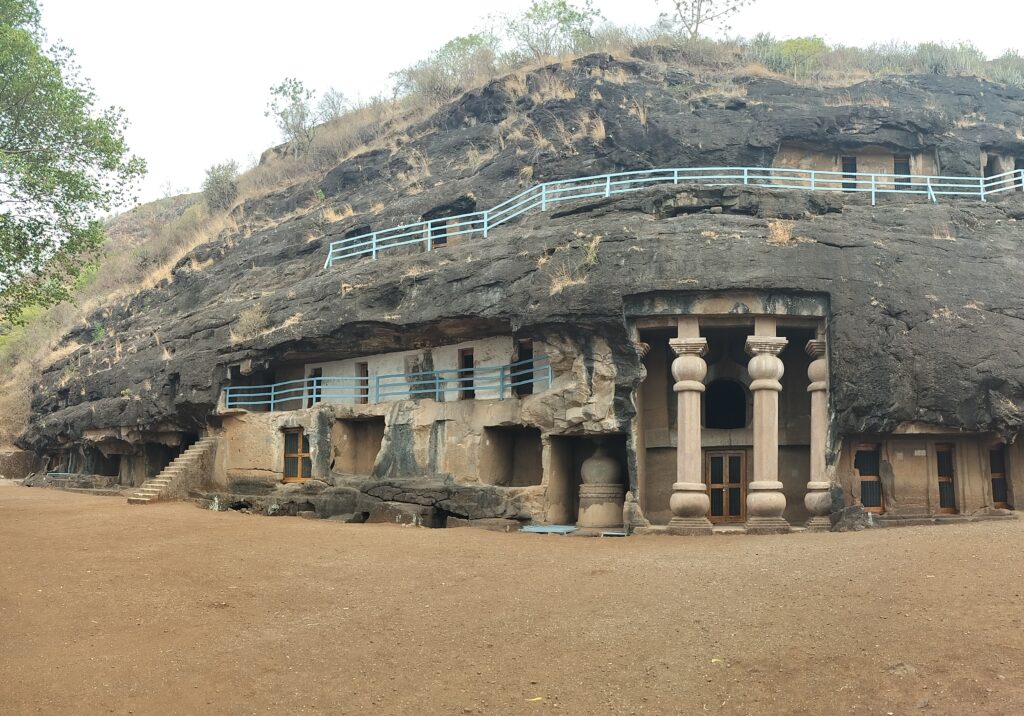
TOP 3 POPULAR ATTRACTIONS IN JUNNAR
A trip to Junnar is incomplete without visiting Shivneri Fort, Lenyadri Caves & Ozar. Each of them have their own historical importance. If started early, all 3 of them can be seen in a day.
SHIVNERI FORT
Shivneri Fort is the birthplace of renowned Maratha King Chhatrapati Shivaji Maharaj. The fort which dates back to the 17th century used to be a military bastion. Perched on a hilltop, Shivneri Fort is visible all the way from Junnar town itself. The climb to the fort is made easy with built steps. After crossing the 7 doors, one reaches the top of the fort. There is a two-storey structure on the top. The most revered and important place to see on the fort. This is where Shivaji Maharaj was born. There is also a cradle placed inside the structure.
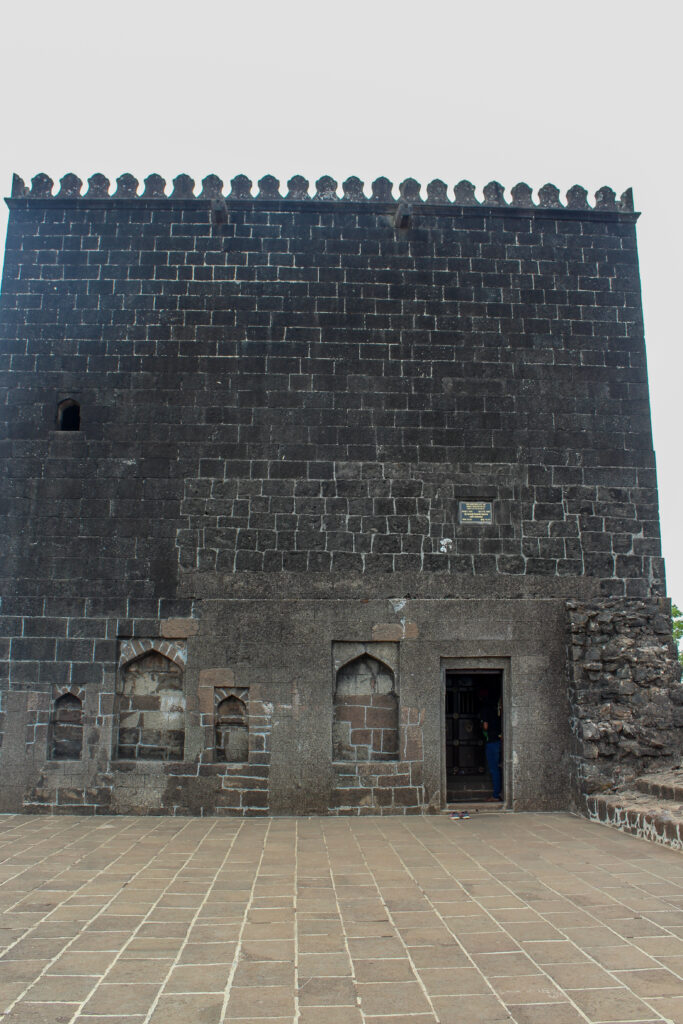
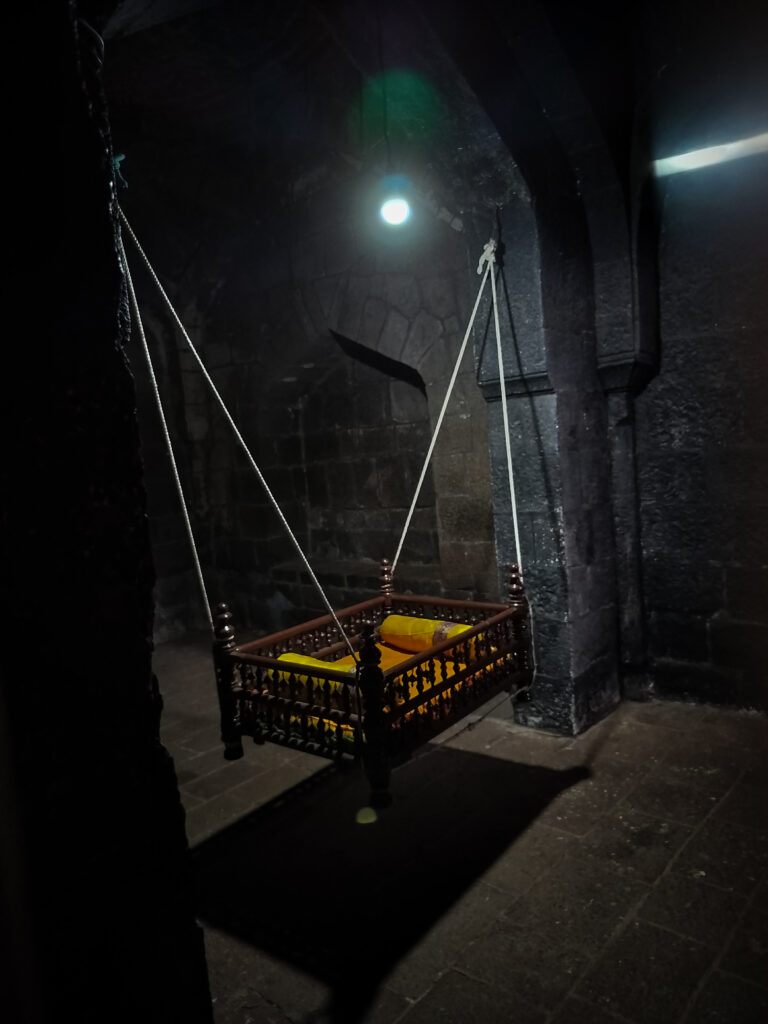
There are many water tanks and wells within the fort complex, which used to provide a steady supply of water to the fort’s inhabitants.
Other notable places to see on the fort:-
- Shivai Devi Temple & Caves – A temple dedicated to Goddess Shivai. It is believed that Shivaji’s mother, Jijabai, used to worship in this temple. Behind the temple, there are 6-7 rock cut caves. It gives a good panoramic view of Junnar.
- Kadelot (The Execution Point) – It is located at the edge of the fort, overlooking the valley below. From this point, the prisoners were thrown off the fort as a punishment.
- Badami Talav – This is a water reservoir on the fort. It is said that Shivaji used to swim in this tank as a child.
- Ambarkhana – This is a storehouse where a huge amount of grain was stored. A portion of it is in ruined condition. But one can see the vastness of it. Little ahead there are two water springs, called Ganga & Jamuna, which have water throughout the year.
- Shivkunj – This is a newly built structure which has a beautiful statue of Jijabai with young Chhatrapati Shivaji Maharaj. It is kept closed most times of the year and opens to the public on occasions like Shiv Jayanti.
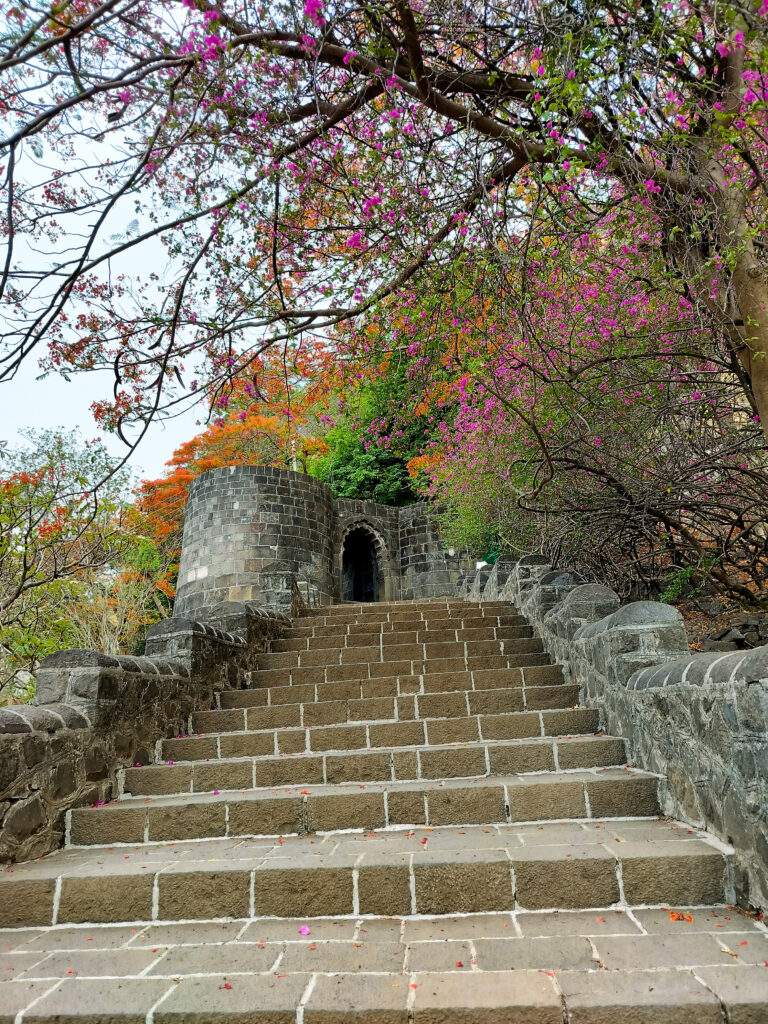
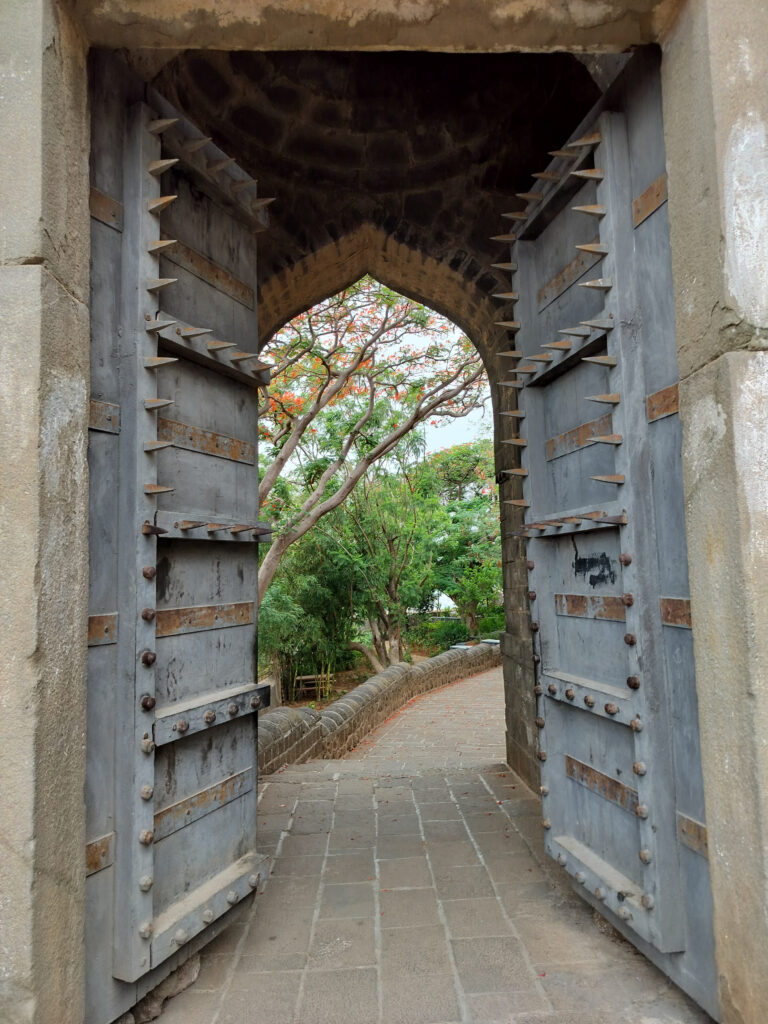
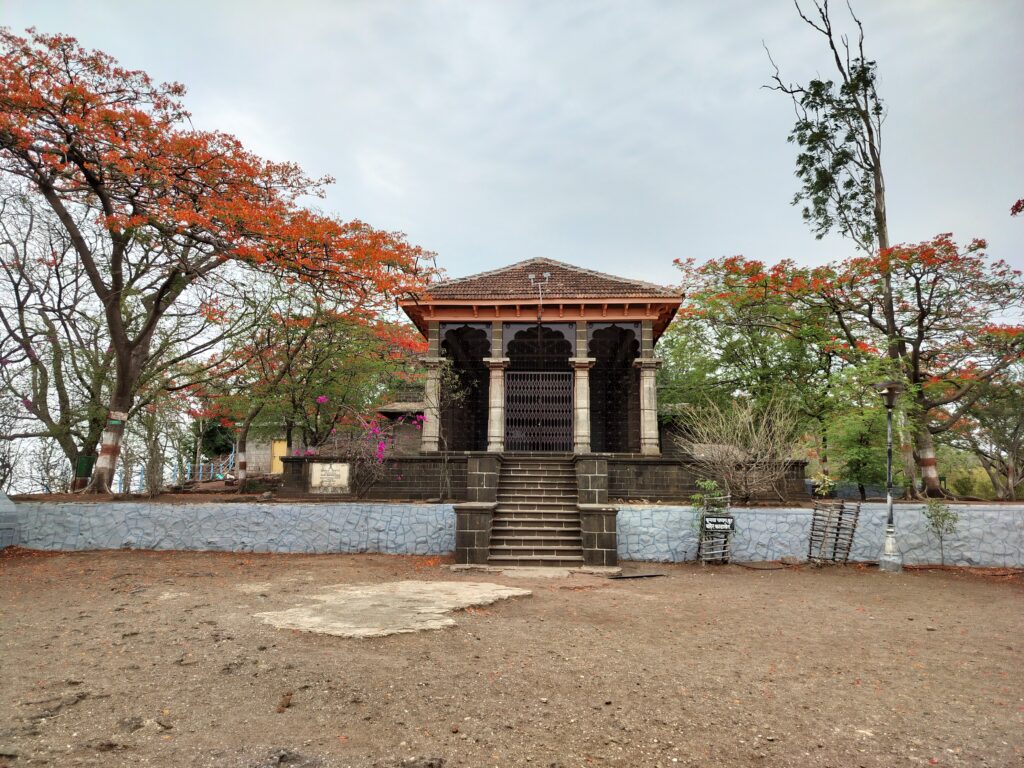
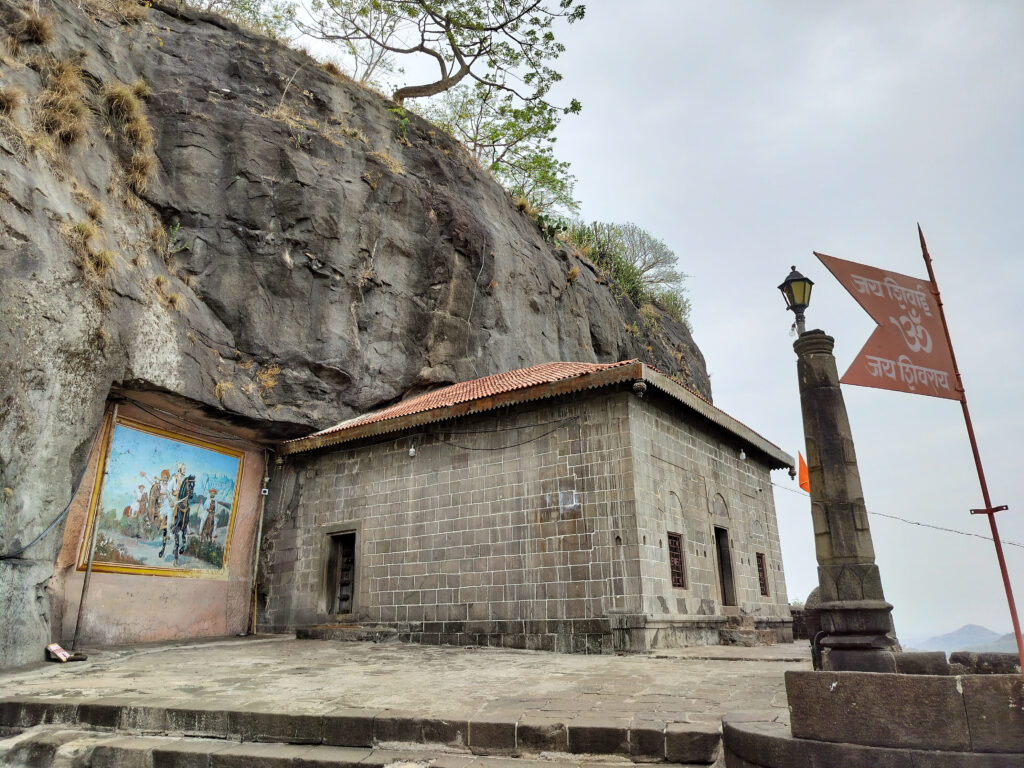
LENYADRI CAVES
The Lenyadri Cave complex (also called Ganesha hill) is a very popular tourist and pilgrimage site showcasing a perfect blend of the Buddhist and the Hindu faiths. There are 30 caves cut into the rocky hills dating to the 3rd century BCE. Out of these one is a Ganesha temple of the Hindu faith.
The Ganesha temple is located in Cave 7, the largest single excavation. The cave is designed as a vihara, with a large assembly hall to worship the idol. The Ganesha form worshipped here is called ‘Girijatmaja’, meaning born to Girija (Parvati). It is also one of the Ashtavinayak temples, the eight most sacred Ganesha temples in Maharashtra and the only one on a mountain and built in the Buddhist cave.
It is approached after climbing around 300 steps. Elderly people can avail Palki which is available at the base which costs ₹1000 per head round trip. As you ascend, you’re greeted with stunning views of the surrounding landscape. The view from the top becomes more spectacular in monsoon with water cascading down the caves.
The temple is well-maintained, and the ambiance is peaceful, providing a calm environment for worship and meditation. The best time to visit is in the morning to get easy access to the temple and caves. Overall, Lenyadri Cave offers a unique blend of history, spirituality and natural beauty. Take time to explore these caves and immerse yourself in their rich history and spiritual atmosphere.
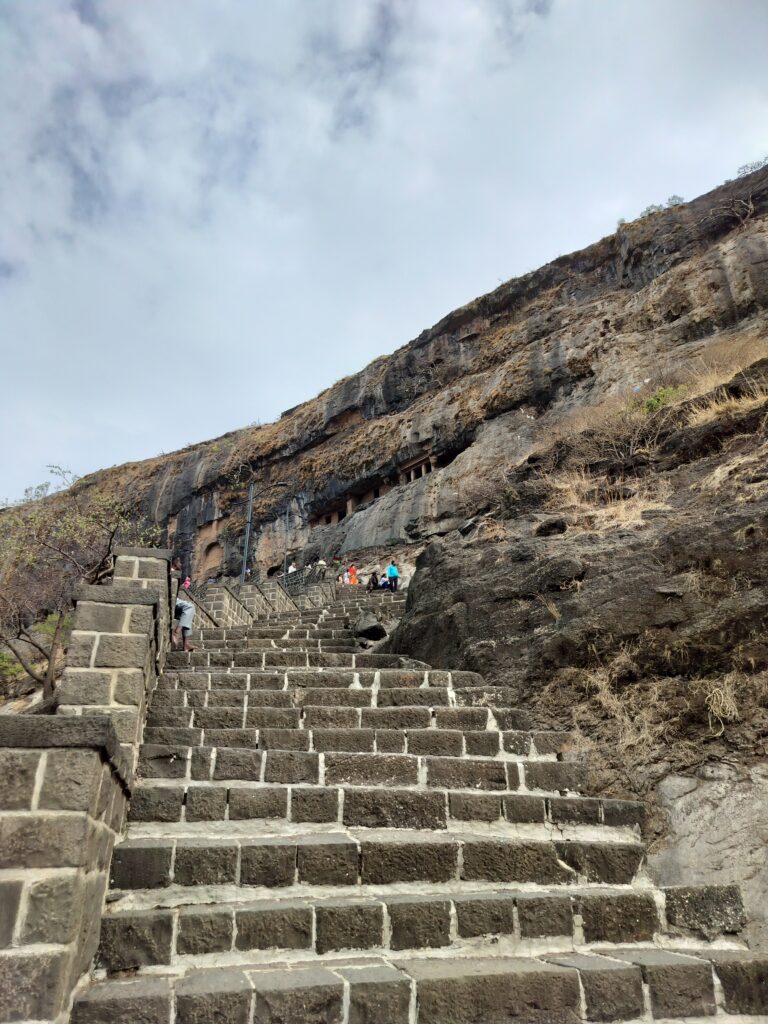
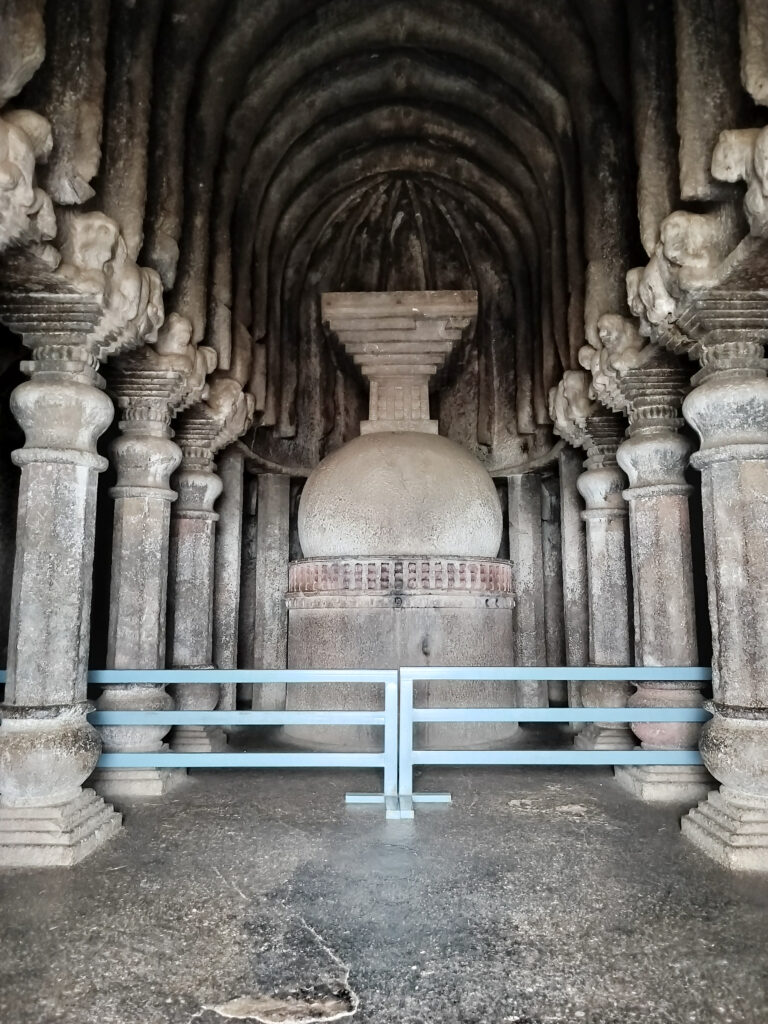
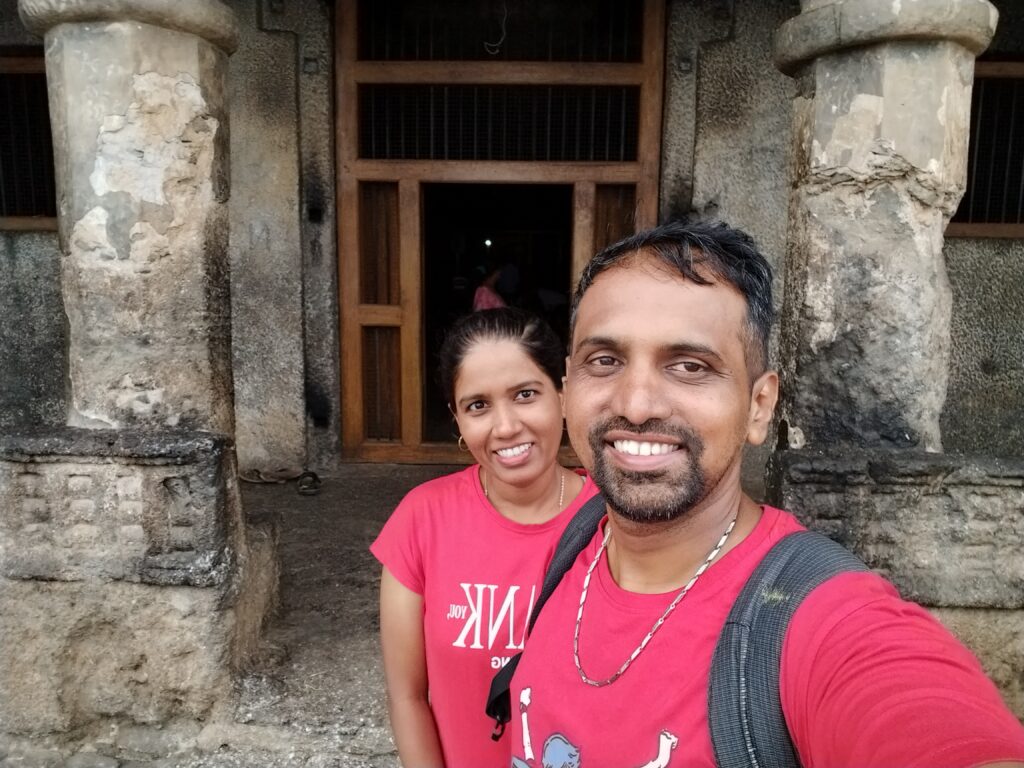
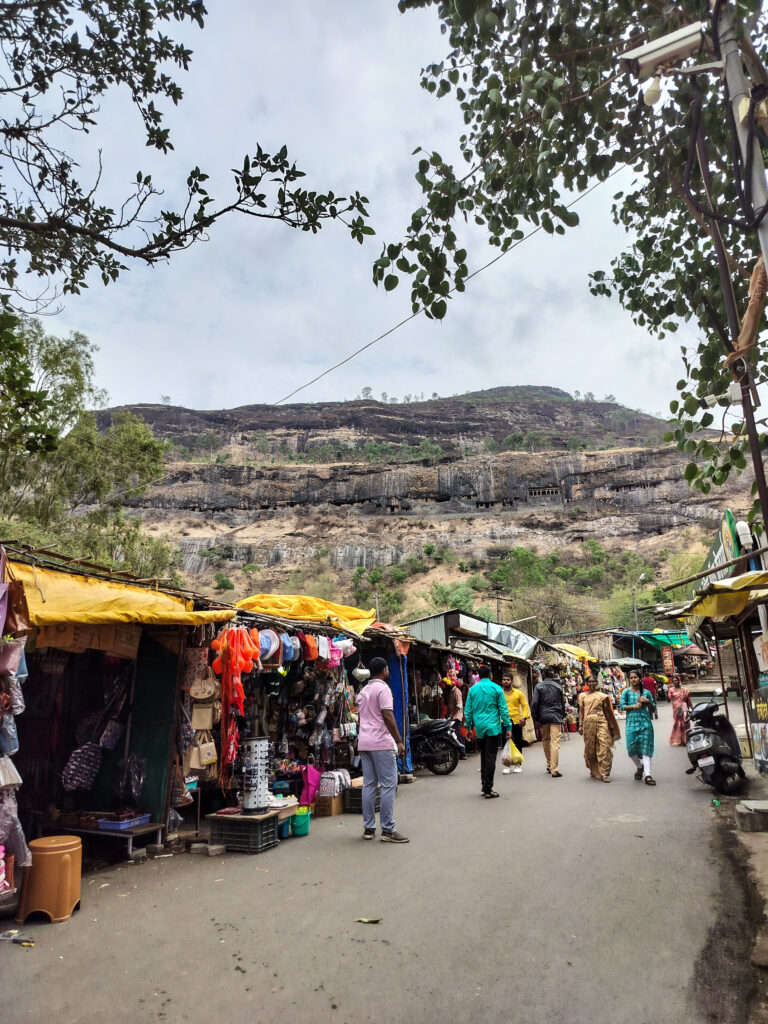
OZAR GANPATI
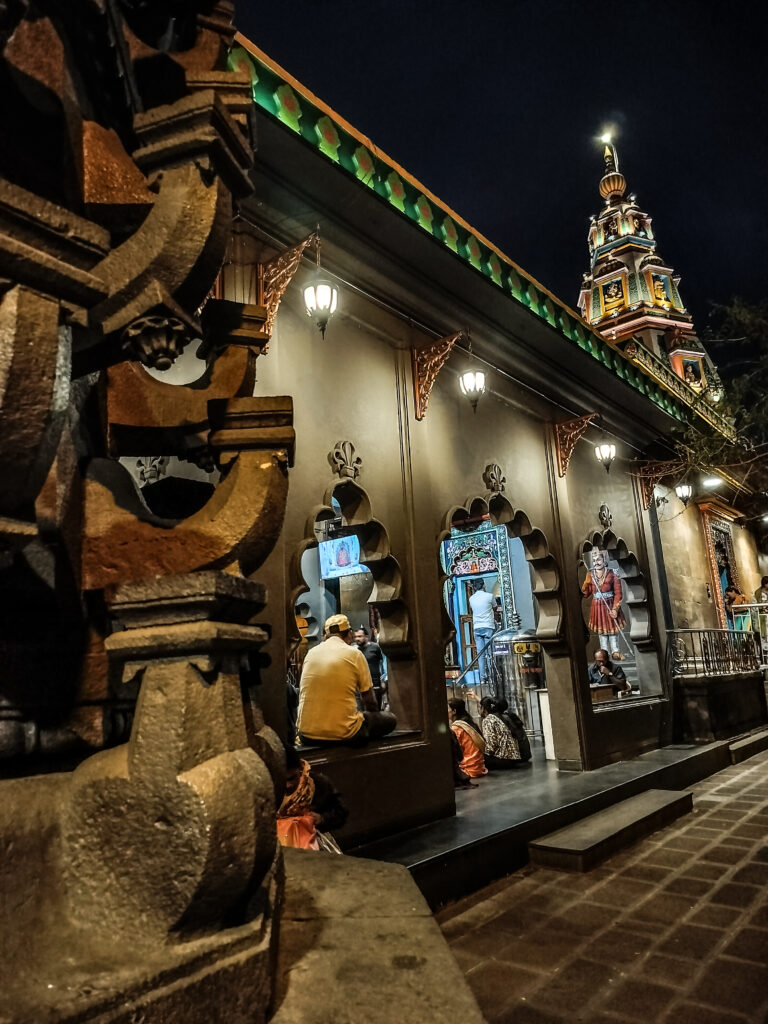
Junnar is home to 2 Ashtavinayaka temples. The Girijatmaj Temple at Lenyadri and Vighnahar Temple at Ozar. Both are not very far from each other. The Ganesha here is known as ‘Vighneshwar. Ozar is a picturesque town located on the banks of the Kukadi river. The temple is known for its deepmala & the golden pinnacle. The temple’s entrance is well decorated with sculptures of two large stone gatekeepers, two elephants, two sages, and four musicians on the wall. As you enter, you will find two giant lamp towers on either side of the gate. Just couldn’t imagine the beauty of all the lamps glowing together!
The temple has a big complex, with several guest houses, a big market place, and a couple of designated parking areas.
We reached the temple sanctum during the aarti time at 7pm. It was a unique experience to be a part of an aarti in one of the Ashtavinayaka temples.
HOW TO REACH JUNNAR FROM MUMBAI (SELF DRIVE)
The location of Junnar is very prime as it is located in between 4 major cities viz Mumbai, Pune, Nashik & Ahmednagar.
Take the Ahmednagar Kalyan road towards Murbad and continue straight till Malshej Ghat. Once you descend the ghat, take the diversion to the right towards Junnar-Kalyan road via Ganesh Khind Ghat. Cross this ghat and ride till Junnar.
Word of Caution – The thick forest belt of Malshej and Junnar are the natural habitat for leopards. They are usually found in lush sugarcane fields searching for meals. Hence it is advisable not to venture out in thickly wooded areas after dark.
FINAL THOUGHTS
Come to Junnar to experience the blend of nature, culture & agriculture as a way of living. For an avid traveller and explorer, Junnar, with 1000 years of history, is so vast that one lifetime seems not enough. 3-4 days is an ideal time to experience the way of living in the rural region of Junnar. Explorations will continue. But slowing down on travels is what makes us feel at home. Experiencing their local food, culture, tradition, etc. As we conclude, the only thought that comes is, when do we go next to Junnar?
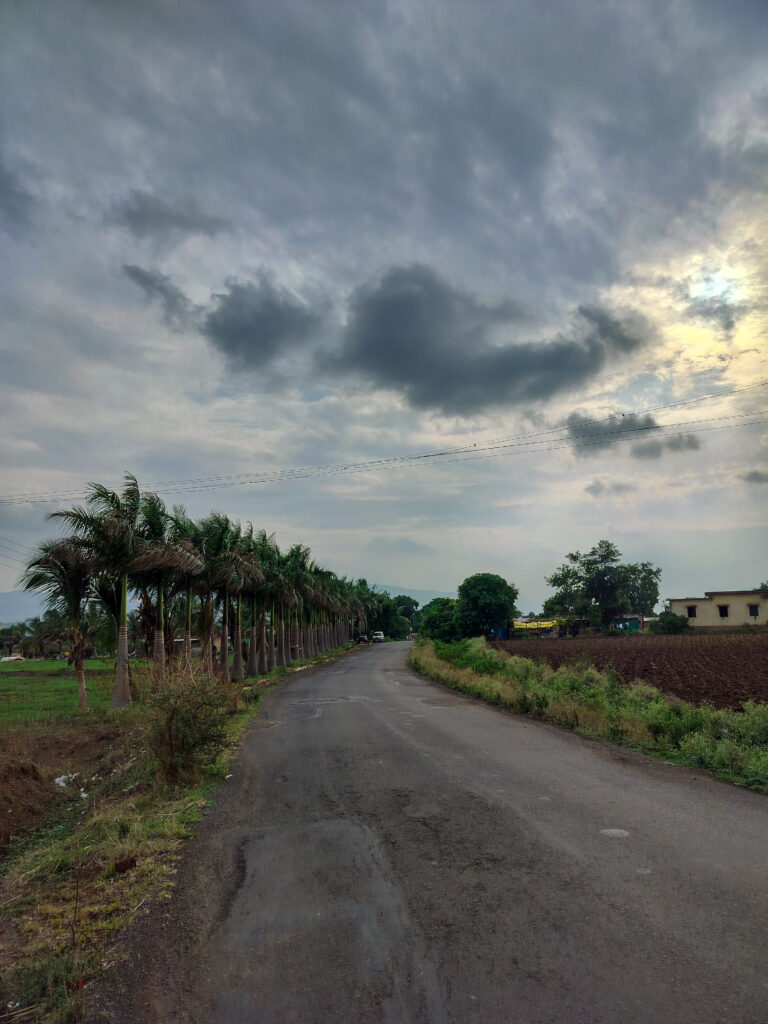
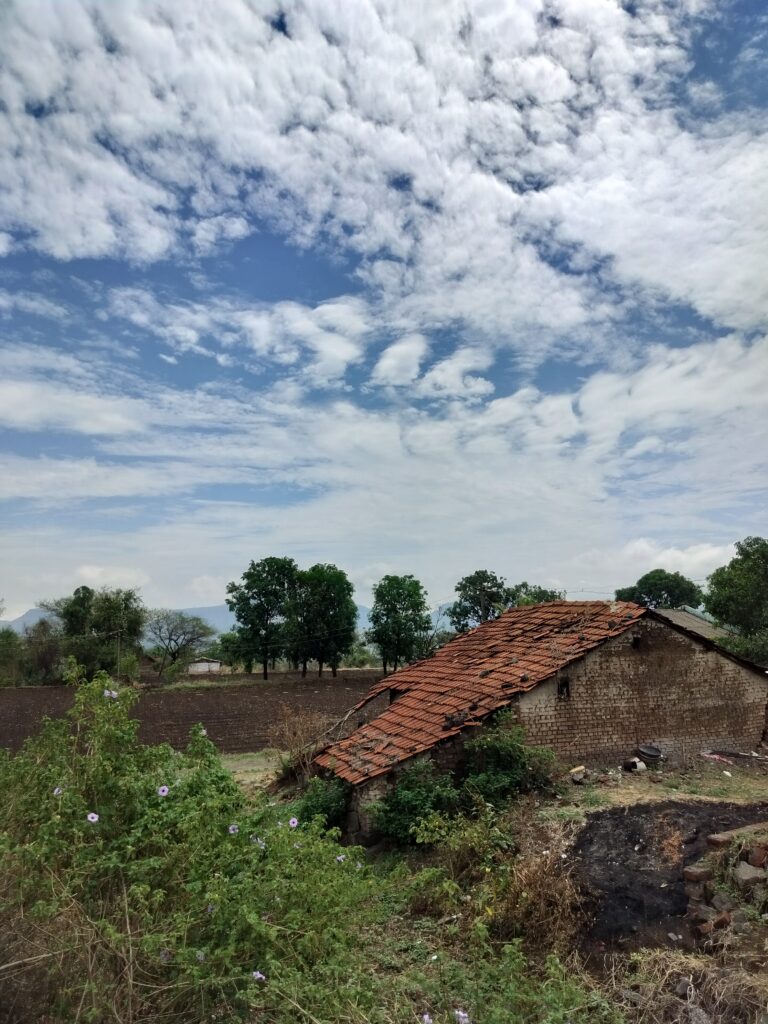

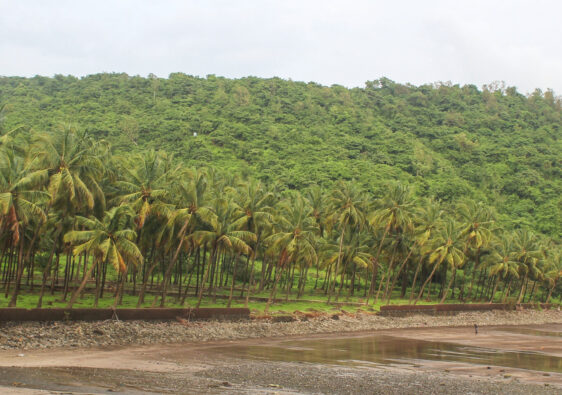
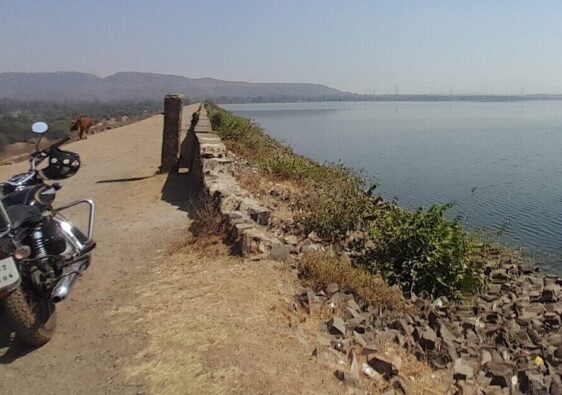

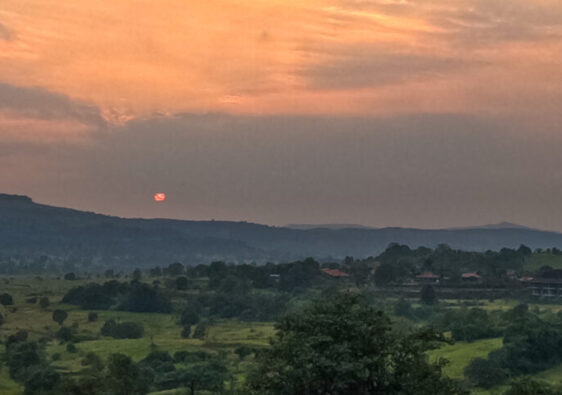
This destination is now on my bucket list, thank you.
Glad you liked it 😊